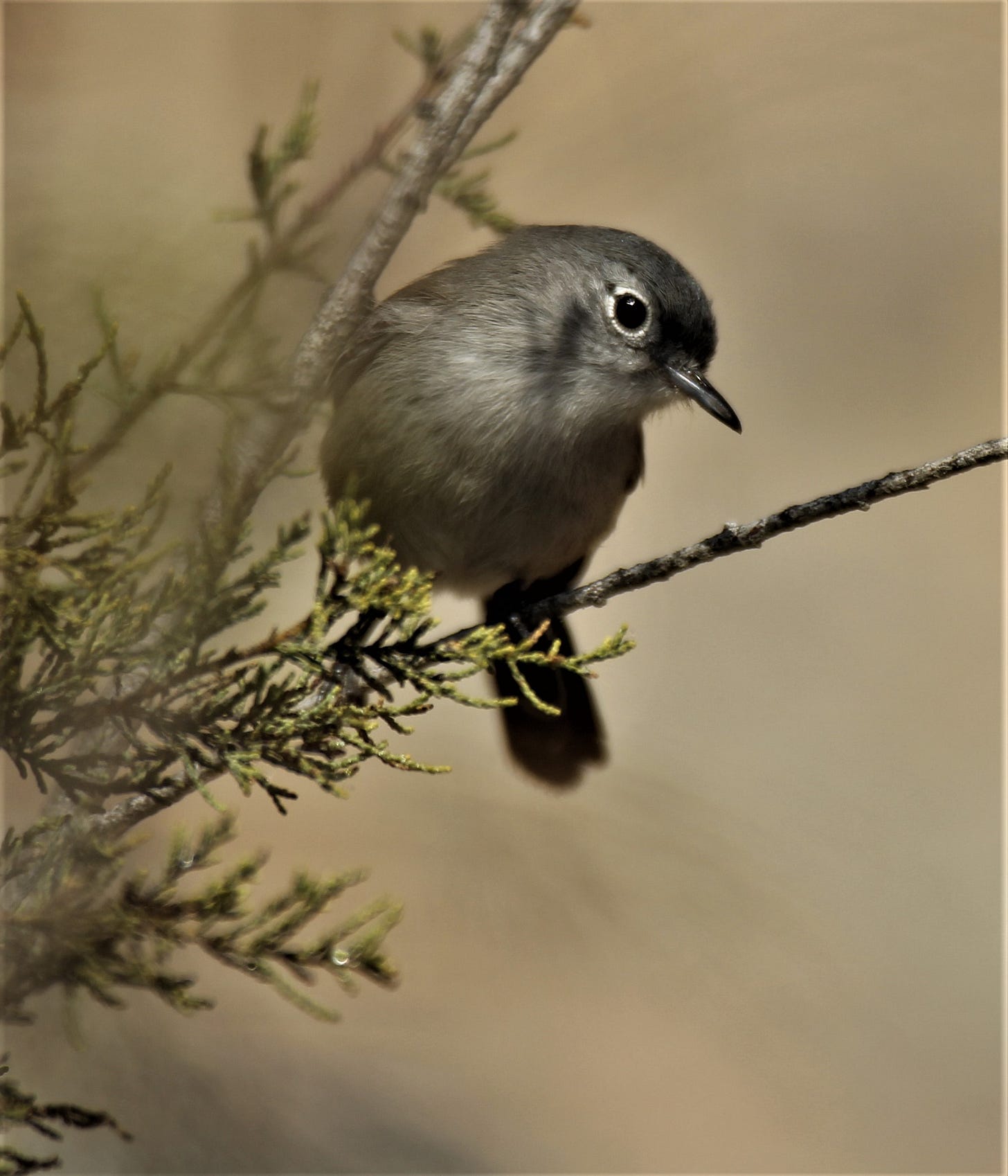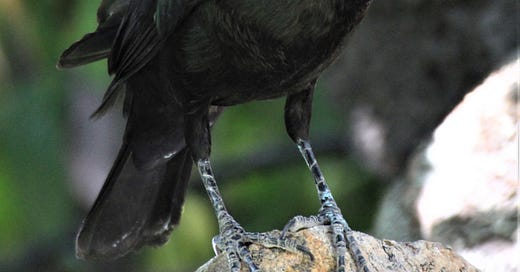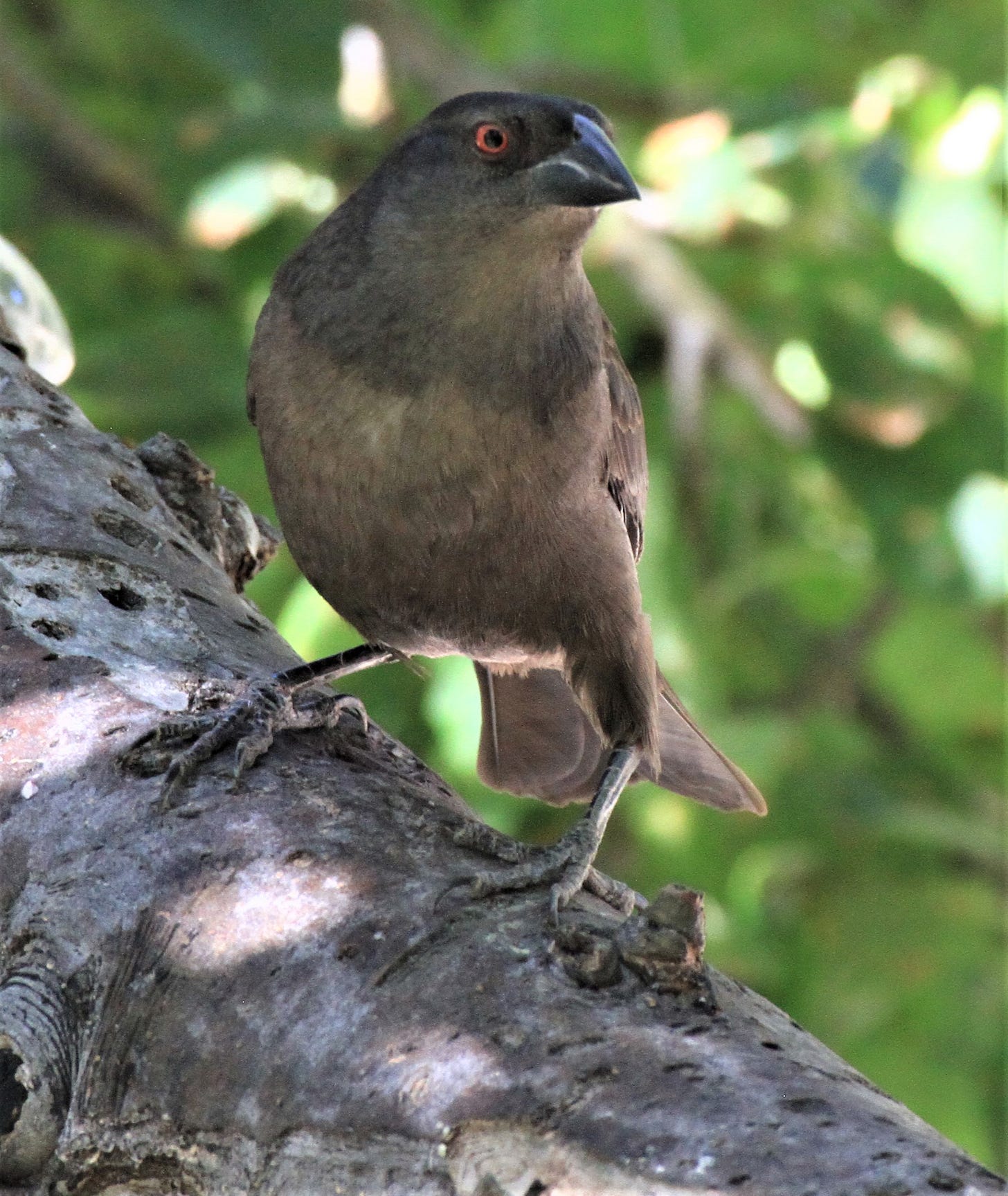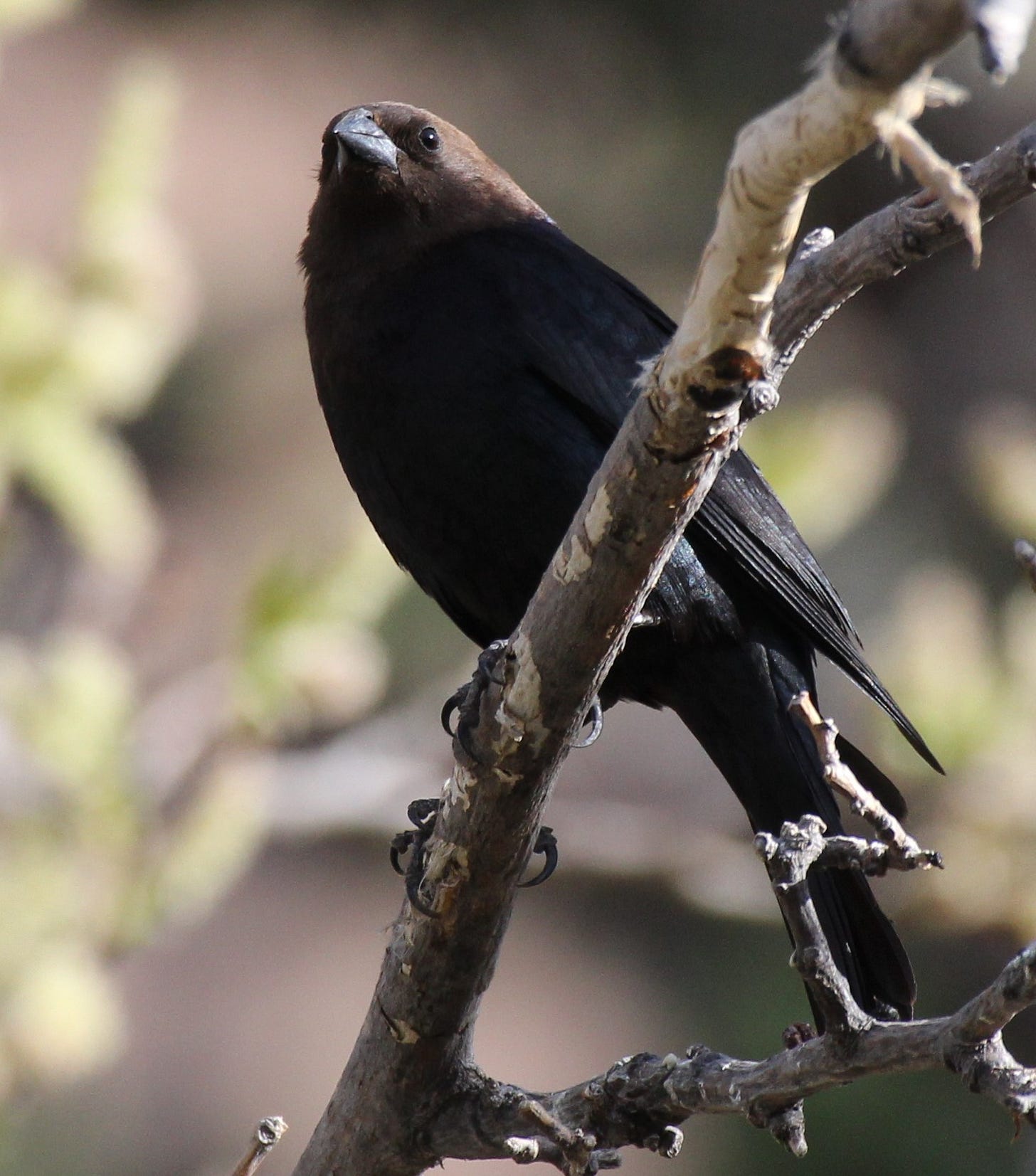May 23, 2022
The bird holds to its perch as if it had risen out of the very rock itself. Its cowl and robe are so black, a hole forms in the space where it stands. Its bill reminds me of the mask worn by plague doctors. And those eyes: a red that doesn’t shine so much as burn.
Bronzed cowbird? More like the Grim Reaper bird.
I admit I have an affection for cowbirds. Two kinds, the brown-headed and bronzed, of the so-called “brood parasites” arrive here from Mexico in May to begin courtship, the females laying their eggs in the nests of other birds, who raise baby cowbirds with their own young. But I see nothing loathsome about them—just a wonder of evolution.
It’s like cowbirds understand they are lousy parents and leave the chick-rearing to birds more capable.
Bronzed cowbirds lay eggs in the nests of 82 species, including warblers, tanagers, and orioles—especially hooded orioles like the pair that visits my oranges and jelly each morning. Brown-headed cowbirds take it to the next level, laying eggs in more than 220 species, mostly gnatcatchers, warblers, and vireos. And they can lay 40 to 60 eggs in a season!
Which is why some birders revile them, blaming them for harming endangered species like Kirtland’s warblers and black-capped vireos. But evidence shows habitat loss and fragmentation play a much larger role in songbird declines. (We also like to blame feral cats for threatening birds rather than the carbon spewing from our tailpipes as we chase the next rarity.)
It’s ironic, but on the mega-urbanized California coast, wildlife officials trap cowbirds during the breeding season of rare least Bell’s vireos, willow flycatchers, and gnatcatchers. The traps, placed in parks or along brushy drainages, are large wire boxes shaped like three-dimensional Ms with no moving parts, just a slot along the vertex between the two upper arches. Cowbirds check in but they don’t check out—until the end of the breeding season—essentially preventing them from laying eggs in the nests of host birds. Volunteers monitor the traps and refresh them with food and water.

I understand that millennia ago cowbirds abandoned the rearing of young over feeding in the wake of roving herds of bison (maybe constructing nests on moving buffalo hide was problematic?). But I question this theory knowing cowbirds return and check up on their progeny.
In a study from the University of Florida, researchers found that brown-headed cowbirds will destroy nests they had previously laid eggs in if the host birds eject the cowbird eggs. The researchers called this “mafia retaliation” because it forced the host birds to raise cowbirds if they wanted to raise their own. Interestingly, by complying with the cowbirds, the hosts also produced significantly more offspring.
What’s more, the scientists learned that cowbirds will destroy nests already underway, causing birds to renest and thereby allowing the cowbirds to parasitize the new brood. They called this behavior “farming.”
Yes, I have an affection for cowbirds.
You might say I have a fever. And the only prescription is more cowbird.
Thanks for subscribing! More to come!







I don't share your affection for cowbirds. Last year we found that a Hooded Oriole pair nesting on our patio eaves raised a huge Bronzed Cowbird. Fortunately the two oriole babies managed to survive and fledge but we watched the parents feed that begging cowbird for some weeks after.
You are right. I’d forgotten what my favorite psychiatrist-neurologist-philosopher-metaphysician, Iain McGilchrist, teaches: context is everything.